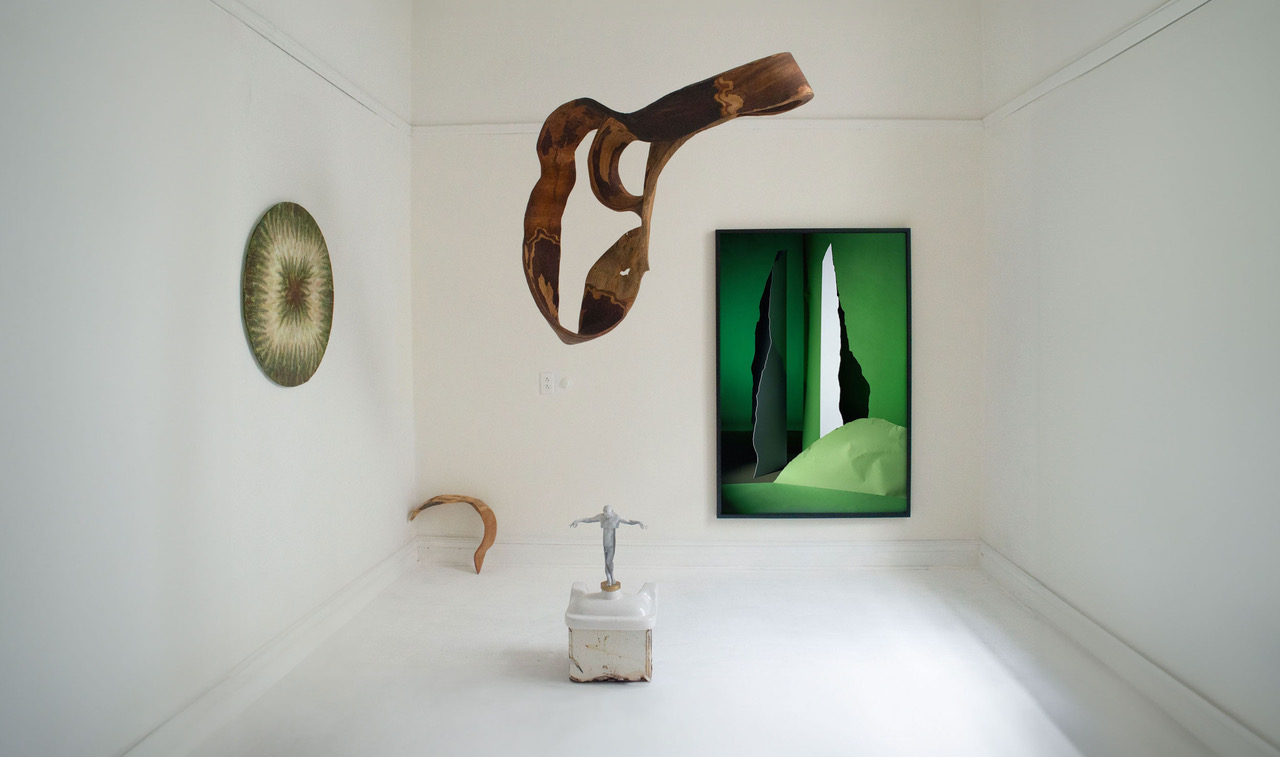
Forma Familiar
Closing
-> Oct 7 2023
KOIK contemporary
By appointment
KOIK contemporary presents the closing of the collective exhibition Forma Familiar with a performance by artists Zosia Zoltkowski and Jordi Hernández, and music by Camilo Ángeles.
Curated by Lesdavag.
In the realm of art, the representation of the human form has been a constant fascination for artists throughout history. From ancient cave paintings to classical sculptures, the human body has served as a timeless muse. However, as artistic expressions evolved, the concept of figurative form expanded beyond mere representation, giving rise to abstract interpretations that challenge our perception. This curatorial essay aims to explore the concept of figurative art and its relationship with form, examining how artists navigate between the limits of abstraction and the familiarity of portraits and the human body. Figurative art possesses a unique power to captivate viewers by harnessing their innate ability to recognize and relate to human traits. Portraits, for example, offer a direct connection between subject and viewer, reflecting emotions, identity, and the human experience. The human body, with its complex anatomy and expressive potential, has also been a source of inspiration for artists seeking to convey narratives and evoke visceral responses.
As art movements such as Cubism and Expressionism emerged, artists sought to push the boundaries of the figurative form. They began experimenting with abstraction, manipulating shapes, colors and perspectives to convey subjective experiences and emotions. By distorting or fragmenting the figure, artists challenged conventional representation, inviting viewers to look beyond the surface and engage with the deeper meanings found in the artwork. The duality of the figurative form lies in its ability to engage viewers through recognition and elicit personal interpretation. Figurative art, even when abstracted, often retains traces of familiarity.
The artists employ a delicate balance between representation and ambiguity, allowing viewers to project their own experiences and emotions onto the artwork. This play between the tangible and the abstract creates a dynamic dialogue between the artist, the artwork and the viewer. Exploring Figurative Form: Bridging Abstractionism and the Familiar In the contemporary art world, artists continue to explore figurative form in innovative ways. Some artists combine traditional techniques with modern elements, creating a fusion of realism and abstraction. Others experiment with unconventional materials, challenging the limits of form and pushing the limits of our perception. Through their diverse approaches, these artists invite us to reconsider our preconceived notions of figurative art and explore new possibilities.
Figurative art, whether rooted in realism or abstract interpretations, serves as a bridge between the familiar and the unknown. Artists navigate the complexities of form to push artistic boundaries and provoke a variety of emotional responses. By interacting with figurative works of art, viewers are invited to embrace the inherent ambiguity and actively participate in the creation of meaning. Through this interaction, we gain a deeper understanding of our own perceptions, emotions, and the timeless appeal of the human form in art.
Participating artists: Angela Leyva, Anna Garner, Daphane Park, Diana Bama, Fernando Polidura, Gonzalo Garcia, Jordi Hernandez, Leonardo Morales, Manuela Riestra, Maria Santamaria, Maximiliano Ruelas, Mateo Pizarro, Melanie McLain, Vera Primavera, Victor Esquivel and Zosia Zoltkowski.
— KOIK Contemporary